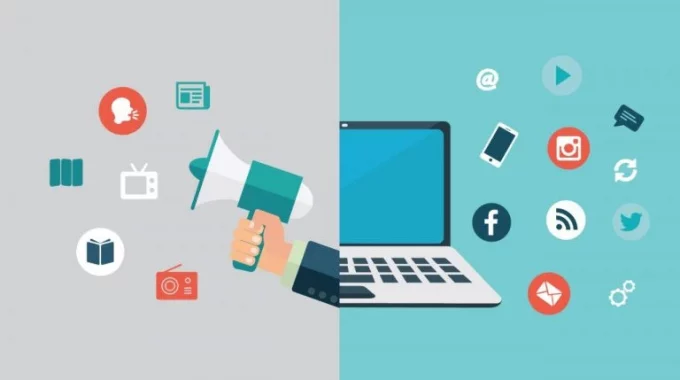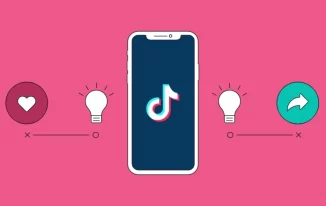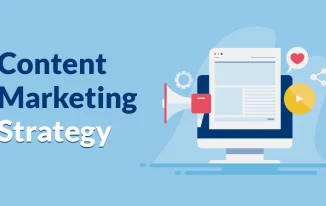What kind of media do you employ while deciding on an advertising strategy? Do you rely on tried-and-true techniques? Or, do you like to take chances? With both Traditional Media vs New Media having their advantages and disadvantages, this debate has continued for several years.
"New media" has become a term for a wide range of new marketing strategies. It's widely accepted that these strategies outperform "conventional media" or "old media" regarding results.
If you'd like to learn more about the differences between Traditional Media vs New Media, keep reading the rest of the article.
What is Traditional Media?
Advertisement channels that have been around longer are referred to as "traditional media." For years, businesses have leaned on these tried-and-true ways. It's not uncommon for corporations to spend their entire advertising budget on these platforms.
Businesses are expected to spend $104.32 billion on traditional marketing in 2021, according to digital research firm eMarketers.
Traditional media has the drawback of necessitating a substantial advertising investment. Since new media is becoming more prominent, businesses are also expanding their marketing strategy to include fewer traditional methods.
Examples Of Traditional Media
Among the most common forms of traditional media are broadcast and cable television, print, billboards, and radio. Traditional media campaigns have been around for a long time, and many have had accomplishments.
On the other hand, traditional media isn't without its debates. According to your TV rep, print advertising can't reach the same audience and frequency as broadcast TV, although this isn't always the case. Your radio rep may tell you that radio is better since it interacts with customers while driving or shopping, possibly when selecting what to buy.
It's a fact that traditional media has advantages and downsides, regardless of the format. Your audience, message, budget, and personal choice all play a role in determining which ad is best for you.
You may wish to advertise on television, but the average cost per million impressions (CPM) is $28. Radio is less prominent, but many businesses can afford it at a CPM of $10. With a CPM of $5, billboards are much more affordable.
Various other techniques include:
- Cold calling
- Television commercials
- Promotional printing
- Banner advertisements
- Radio advertisements
What is New Media?
The term "new media" refers to digital channels that have been increasingly popular in the advertising industry during the past decade. In today's more mobile society, new media advertising is becoming more and more effective.
Experts predicted that by 2021, corporations would spend $172 billion on digital advertising, a significant increase in the new media industry's spending.
Examples Of New Media
Internet-based advertising such as banners, social media, and apps are all part of new media. It is possible to reach customers at the same moment they walk into a store with this medium, and businesses can even use push notifications on their customers' smartphones to do so, for example. One of the most popular new media forms nowadays is targeted advertising based on your recent search history.
The reduced cost per thousand impressions (CPM) of new media compared to traditional media is one of the reasons for its popularity among businesses. For example, social media has a CPM of about $2.80.
Some more techniques include:
- Search engine marketing
- Pay-per-click marketing
- Email marketing
- Content marketing
- Social media marketing
Traditional Media's Downfall In 2020
New terminology has been established to discuss Traditional Media vs New Media marketing approaches, especially in recent years. There are outbound and inbound marketing, both of which have roots in traditional advertising.
Since these marketing techniques rely on sending customers messages, they are referred to as "outbound" marketing. Inbound marketing, on the other hand, refers to marketing in which consumers actively seek out the company or enter the marketing channels of their own volition.
The popularity of outbound marketing tactics has decreased over the previous few years. Now that potential customers have access to new platforms like the Internet, websites, and social media, they can draw their own opinions on where to take their business—and dismiss advertising that implies otherwise.
This may be one of the main factors when it comes to the argument between Traditional Media vs New Media.
Traditional media has grown less appealing to consumers since they can turn it off. Adverts can be filtered, commercials skipped, radio stations altered, mail tossed away, and banners prevented. So, marketing strategies are sometimes overlooked or even considered inefficient.
Is It Time For Your Company To Quit Relying On Traditional Advertising?
No one has the authority to tell you which forms of marketing are worth the investment or which are not. It's impossible to predict what will or won't work for you because your business and customers are both unique, which extends to new media.
Traditional and outbound marketing strategies, as previously indicated, are becoming less effective over time for many firms. Advertising and outbound marketing can be less effective if you observe a decline in the amount of money you're getting back. As a result, it would be prudent to gradually phase out the old approaches in favour of more modern ones.
For many businesses, one or two tried-and-true media strategies are still the most effective.
Billboards, for example, can assist firms in acquiring visibility in their local operating areas, despite their high cost. If a company wants to reach a wider audience, print advertising might be a good way to do so.
Traditional Media vs New Media, frequently pitted against one another, can add a great deal of value when used in concert.
If your present marketing strategy is still working for you, there is no risk in continuing it. Isn't it wise to invest in both new and old media? Although you should keep an eye on the efficacy of your marketing strategies, you should also do regular evaluations to ensure that you aren't overspending.
Comparison Of Traditional Media vs New Media
While conventional and new media can work together, there are a few reasons to choose new media over growing your usage of classic media in your marketing strategy.
Affordability
New media is less expensive, which is relevant. Spending the same amount of money on new media as conventional media will almost certainly result in a greater audience reach.
Accuracy
The accuracy of new media results is an additional benefit. Several new media metrics may be examined, including how many people saw your ad, the duration of their exposure to your ad and whether or not they clicked through to your website.
Value
It is not uncommon for new media to be far less expensive than more established forms of media. Your ad will cost less, but the people it reaches will also cost less, thanks to the lower advertising costs.
Communication/ Interaction
Additionally, new media is a lot more engaging than traditional media. With the advent of new social media, businesses and consumers may now communicate and connect more directly than ever before.
Data-Driven
New media relies heavily on data. For example, you can see how many individuals clicked on your banner ad or visited your website.
A Fair Playground
All businesses benefit from the equal playing field provided by social media. Using social media to promote your business doesn't cost a fortune.
Trust
Businesses that have a presence on social media can build trust with their customers. If a customer follows you on social media, it implies they have the same level of trust as a friend. As a result, word-of-mouth advertising can be more effective.
Real-Time Results
The information you get via new media, as opposed to traditional media, is typically instantaneous. That gives you the ability to make immediate adjustments to your creativity to maximize your results. For this reason, it's easier to track the success of a new media campaign than it is with traditional media.
Global Reach
Traditional media, on the other hand, tends to be more localized. Using modern media, you may reach a global audience for a fraction of the price.
Target Audience
Almost everyone now uses new media, allowing it to focus on a certain audience. As a result, you'll be able to choose your audience.
Virality
New media that is truly effective has the potential to spread like wildfire. As a result of the exposure your work will receive, you will gain credibility and a better reputation.
Impact for Customers
With the advent of social media, customers can feel like businesses and brands are friends. As a result, consumers and corporations are further isolated from one another through traditional media.
Usage amount
Today's customers just engage more with new media than conventional media. More and more people are spending more and more time on their cell phones than on the television or listening to the radio, respectively.
Result Tracking
Tracking the results of new media is easy. Using this data, you'll be able to identify exactly which demographics your advertising is reaching and which ones they ignore.
Mobility
Consumers can access new material no matter where they are, and your customers can bring it into your store.
Adaptability
It's easy to change the way you use new media. Ads and sponsored social media posts can both be quickly updated with new material and creativity.
Running Multi-Campaigns
With the advent of new media, you may simultaneously run campaigns utilizing various creative assets. A wider range of populations can now be targeted thanks to this method.
Personalization and Customization
Adapting new media to your company's specific requirements is a piece of cake.
Marketing
A sort of outbound marketing, traditional media allows firms to communicate their message to consumers. By using social media and other new media forms, businesses may reach customers who have actively sought them out. When compared to outbound advertising, inbound marketing attracts a higher percentage of receptive customers.
Engagement
With the advent of new media, consumers can interact with brands on a deeper level. New media facilitates interaction between businesses and their customers, whether it's through social media or a question-and-answer banner ad.
Effortless Operation
Although new media can be intimidating initially, it is very simple to utilize. The results are clear, and the websites are simple to use.
Targeting Capabilities
New media is a great option if you're seeking to reach a certain group of people. Traditional media can't compete with this level of precision in targeting.
Five Worthwhile New Media Techniques For Your Organization
Consider implementing one of these five cutting-edge new media tactics in your company. You must have a website to implement any of these methods. If your website isn't up to snuff, you may want to start over with a redesign or rebuild.
1. Search Engine Optimization
If you want your website to appear higher in search engine results, you need to focus on SEO or search engine optimization (SEO). If your website doesn't appear in search results, you won't be able to generate leads or consumers. SEO is an integral aspect of online marketing.
2. PPC (Pay Per Click) Marketing
One more new media tactic to try is PPC or pay-per-click. Pay-Per-Click (PPC) is a form of online advertising in which you select the keywords for which you want to place a bid. Your advertising will appear above organic search results if your bid is the highest. Only when a user clicks on the ad, do you pay for it.
Your advertising will not cost you if no one clicks on them. In contrast to SEO, PPC ads' outcomes can be seen immediately. When you use pay-per-click advertising, you can begin attracting new customers immediately.
3. Content Marketing
It is a technique that relies on providing your target audience with useful content to build a following and, eventually, sales.
Even while content marketing as a new media approach has been around for a long time, its popularity has increased dramatically in the last few years. It's a great method to get to know future customers.
4. Social Media Marketing
Are you using social media as an effective marketing tool in addition to using it on a personal level? In 2021, 82% of the US population had a social media profile.
Businesses are increasingly adopting social media to attract new customers and deepen their ties with current clientele. One-on-one talks with potential clients can be facilitated through social media.
5. Email Marketing
Marketing via email has emerged as one of the most effective ways to connect with your target audience. Your email marketing plan can be used in any way you choose. Use it to spread the word about your work or provide special deals and discounts.
It's also a good idea to follow up with customers after they make a transaction and ask them for a review. An email marketing campaign can help build a stronger relationship with your customers no matter how you use it.
Conclusion: Final Thoughts!
There's no need to compare Traditional Media vs New Media. Advertising campaigns should not be constructed in this way since they are perceived as "either/or" choices.
Using both conventional and new media is the greatest way to reach the biggest possible audience at the most effective frequency. The use of both is beneficial to businesses because they each have their own significant benefits that they provide over the other.
Instead of relying solely on the old media, think about incorporating some of the newer forms of media into your strategy as well. It's also not a bad idea to include some classic means of advertising if you're mostly using new media, such as social media or any other new media.
That being said, new media is a highly successful approach to reaching customers across most demographics, even if your budget is limited. It's always possible to start with one media form and then expand to the other as your organization and your budget increases.





